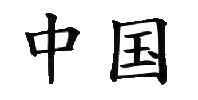China Beat Archive

China Beat Blog: Archive 2008-2012
Date of this Version
5-15-2009
Document Type
Article
Citation
May 15, 2009 in The China Beat http://www.thechinabeat.org/
Abstract
In the months leading up to the Beijing games, as Tibet protests flared and t-shirts derided the “Genocide Olympics,” Jill Savitt, the Executive Director of the human rights group Dream for Darfur deployed a striking phrase in a New York Times interview about her group’s plans to pressure Beijing to take action on Sudan. Promising a broad-based campaign that would be far more sophisticated than a mere “ham-fisted boycott,” she explained, “From start to finish, what we want China to fear is death by a thousand cuts.”
In a coincidence tinged with historical irony, an important book published in the same month as this article began with the observation that the form of capital punishment known in China as “lingchi” and in English as “death by slicing” or “death by a thousand cuts” has served the Western imagination for over a century as a vivid emblem of Chinese barbarism. Read in this context, Savitt’s comment, by implicitly linking a notorious penal practice with atrocities in Darfur, reminds us of the continuing power of collective images of “feudal” China to inform current discussions of global politics, and suggests that much of the current passion concerning the human rights situation in China may have roots in a century-old preoccupation with peculiarly Chinese expressions of state power.
Arising out of a symposium on the comparative history of torture, Death by a Thousand Cuts offers a rich, wide-ranging examination of the histories of both the actual practice of lingchi and of the resonances of this and other forms of (often fantastical) punishments in the Chinese and Western imaginations. In some ways, the story is considerably more banal than one might expect: lingchi was used relatively rarely, and when it was, death was brought on quickly with a stab to the heart; the remaining cuts being mostly for show. In others, it poses unexpected challenges to the familiar pieties that are the continuing legacy of Western visitors’ descriptions of late Qing society. Like footbinding, the historical spectacle of lingchihas reassured generations of European and American observers of the comparative decency and humaneness of their own social practices. The flattering stories we tell ourselves, however, may merit additional scrutiny when they turn out, as the authors argue in the case of lingchi, to have been constructed for this purpose.
Included in
Asian History Commons, Asian Studies Commons, Chinese Studies Commons, International Relations Commons


Comments
Copyright May 15, 2009 David Porter. Used by permission.